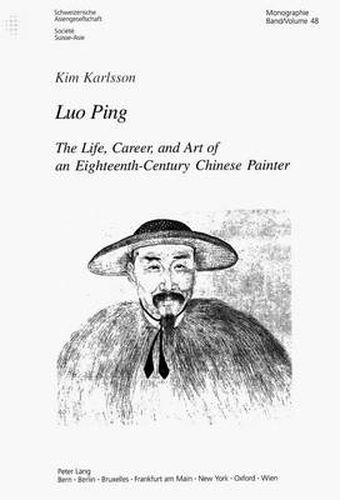Readings Newsletter
Become a Readings Member to make your shopping experience even easier.
Sign in or sign up for free!
You’re not far away from qualifying for FREE standard shipping within Australia
You’ve qualified for FREE standard shipping within Australia
The cart is loading…






Luo Ping (1733-1799), known as the youngest of the Eight Eccentrics of Yangzhou and a follower of Jin Nong (1687-1763), was one of the most versatile and compelling artists of his time. While his work covers all major painting subjects and exhibits great stylistic and conceptual variety, his personality appears equally multifaceted. Contemporaries and later critics characterized him variously as a cultural arriviste, a Confucian scholar of great moral dignity, a Buddhist monk, a loving and devout husband, an eccentric with strong leanings toward the supernatural, and even an anti-Manchu dissident.
Structured as a comprehensive and largely chronological account of the artist’s life and his interactions with patrons of different geo-cultural environs, namely Yangzhou and Beijing, this study attempts to identify the factors that contributed to the unfolding of the master’s artistic voice. It includes an extensive examination of Luo’s personal, literary, and artistic engagement with Buddhism, which constituted a significant but hitherto obscure facet of his life and work.
$9.00 standard shipping within Australia
FREE standard shipping within Australia for orders over $100.00
Express & International shipping calculated at checkout
Luo Ping (1733-1799), known as the youngest of the Eight Eccentrics of Yangzhou and a follower of Jin Nong (1687-1763), was one of the most versatile and compelling artists of his time. While his work covers all major painting subjects and exhibits great stylistic and conceptual variety, his personality appears equally multifaceted. Contemporaries and later critics characterized him variously as a cultural arriviste, a Confucian scholar of great moral dignity, a Buddhist monk, a loving and devout husband, an eccentric with strong leanings toward the supernatural, and even an anti-Manchu dissident.
Structured as a comprehensive and largely chronological account of the artist’s life and his interactions with patrons of different geo-cultural environs, namely Yangzhou and Beijing, this study attempts to identify the factors that contributed to the unfolding of the master’s artistic voice. It includes an extensive examination of Luo’s personal, literary, and artistic engagement with Buddhism, which constituted a significant but hitherto obscure facet of his life and work.